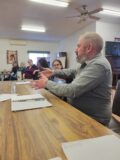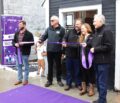Commentary
No turning back now
October 4, 2022

By Nate Smelle
For the past two years now, the federal government has set aside a single day each year for people across the country to acknowledge Canada’s Indigenous heritage, and reflect on the atrocities committed in the name of colonialism.
Considering that it took our governments more than 154 years to admit that Canada was, and still is being built on stolen Indigenous land, the truth is that we are only just beginning to understand what reconciliation truly means. Nonetheless, the fact we now recognize Sept. 30 as the National Day for Truth and Reconciliation is a small step forward in our tragically slow and often stalled march towards social progress.
Coming to terms with the persistent genocidal approach our governments have taken, and in many instances still take, is not easy or pleasant. But, it is without a doubt, absolutely necessary if we are sincerely committed to understanding who we are as Canadians, and which direction we are headed in as a nation.
Say what you will about Prime Minister Justin Trudeau and everything he should and could do better, but when it comes to fostering meaningful reconciliation with Indigenous peoples and communities, his government’s approach has been far more effective than his predecessor Stephen Harper’s “not on our radar” strategy.
While the federal government observes the National Day for Truth and Reconciliation as a statutory holiday for its workers, the majority of provinces have not followed their lead. Currently only New Brunswick, Prince Edward Island, Nunavut, and the Northwest Territories have declared Sept. 30 a statutory holiday.
Although Ontario and the rest of the provinces and territories may not be taking this holiday seriously yet, they will inevitably be forced by the court of public opinion to get on board.
Why? Basically, because it is simply the right thing to do. Not that we as Canadians have ever been bound by our sense of moral obligation, but now that we have started down the path of truth and reconciliation, there is no turning back.
If the discovery of 215 Indigenous children’s bodies in unmarked graves at a former residential school site in Kamloops, B.C. mattered to us last year, then the thousands of others who have been found since, along with those who have yet to be discovered must matter to us from now on.
Attending the ceremony honouring the National Day for Truth and Reconciliation on Sept. 30 in Bancroft’s Millennium Park, I was immediately impressed by the large crowd of students, teachers, and community members wearing orange shirts in solidarity with the Indigenous community. As I stood back and attempted to count the crowd size, it struck me as I hit the number 200 that there were around the same number of children in attendance as there were disposed of underground outside the former residential school in Kamloops, B.C.
Recalling how the last residential school in Canada remained open until 1996, I struggle to understand how and why we as Canadians have refused to accept the horrific reality of our nation’s truth, when there is evidence of this genocide all around us.
Scanning the crowd in Millennium Park that day I noticed many familiar faces in attendance. Putting on a different filter, I realized that among these familiar faces I did not recognize a single member of council, or candidate from any of the local municipalities in North Hastings. Perhaps this observation provides us with some insight into the reason why we continue to walk so slow along the path to truth and reconciliation.
To be fair, the crowd was rather large, and I do not know what every candidate running in each municipality looks like. So, if you were there, and/or if your name happens to be among the lists of local candidates, Bancroft This Week invites you to share with our readers – possibly the people you will represent during the next term – what truth and reconciliation means to you. Send your letters to [email protected] and they will be published prior to the municipal elections on Oct. 24.


















